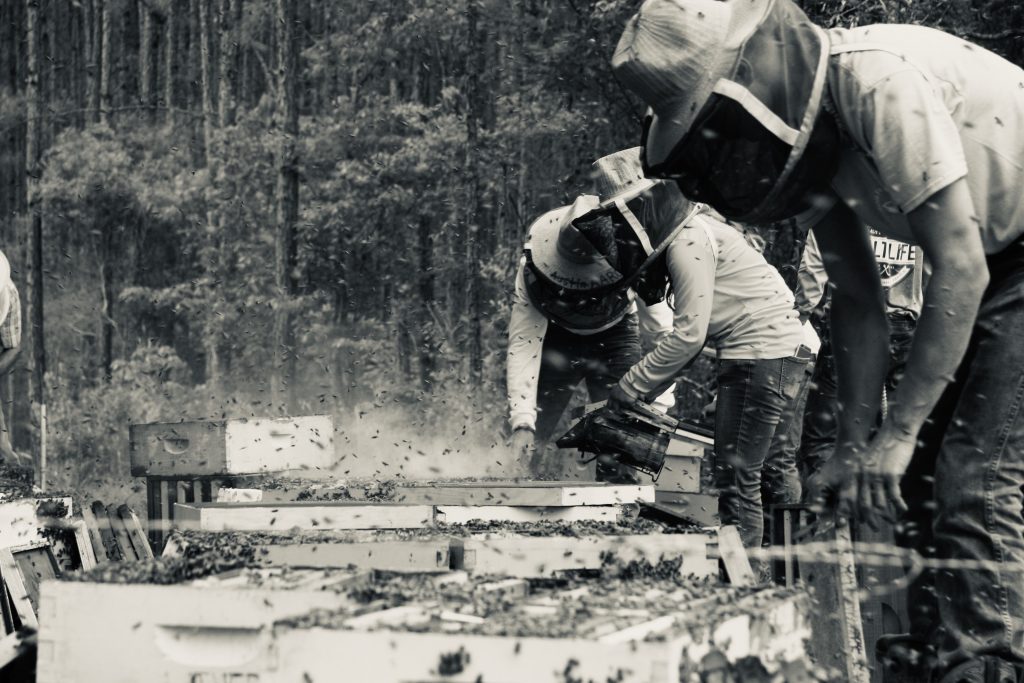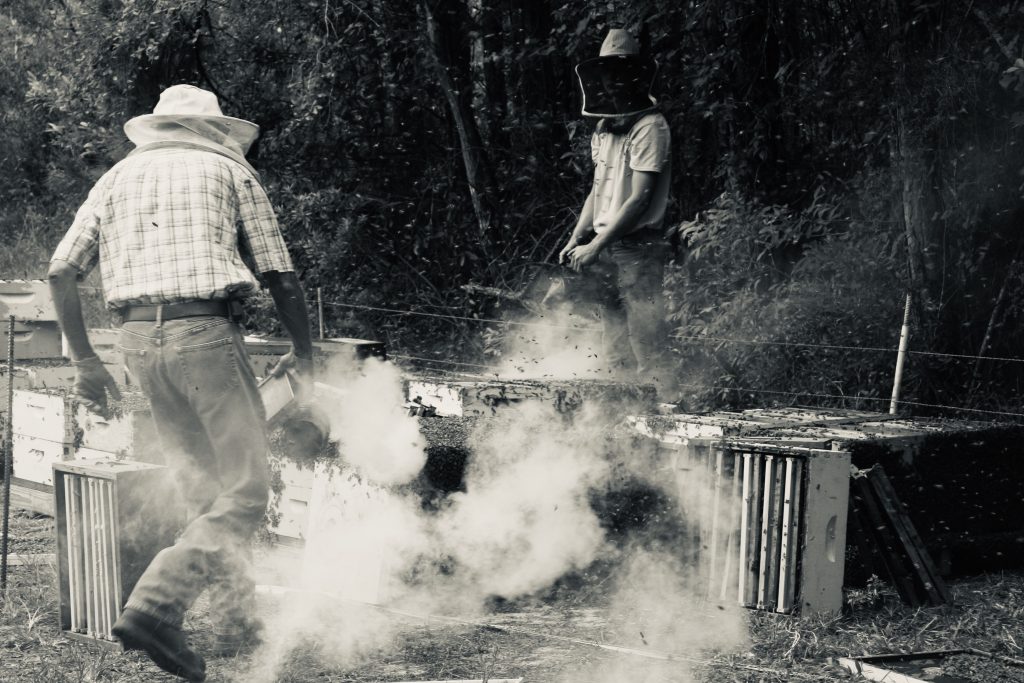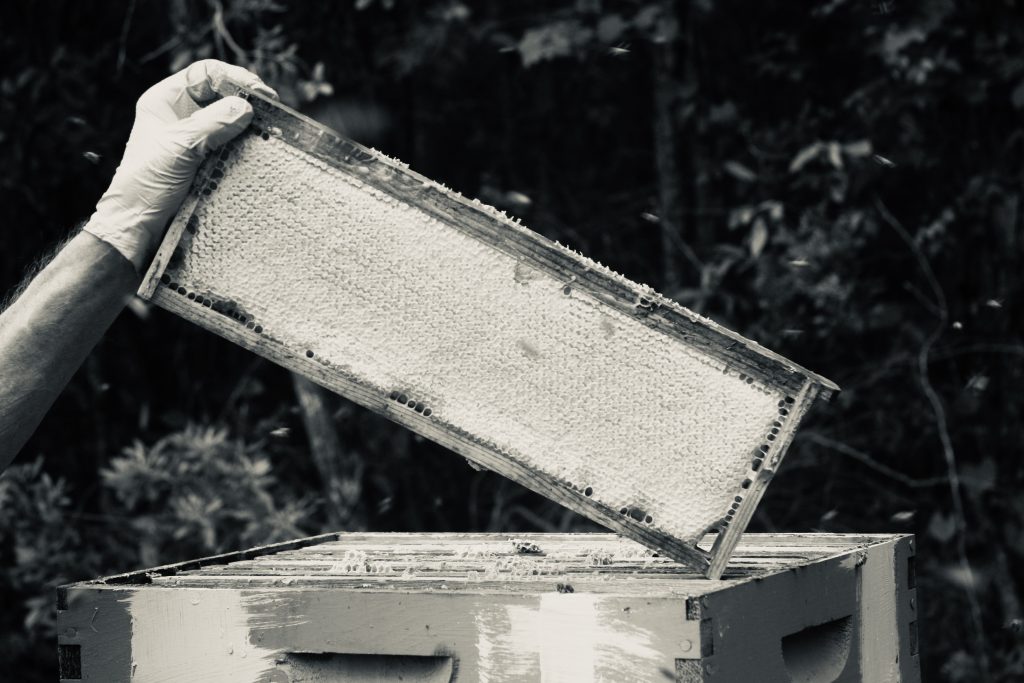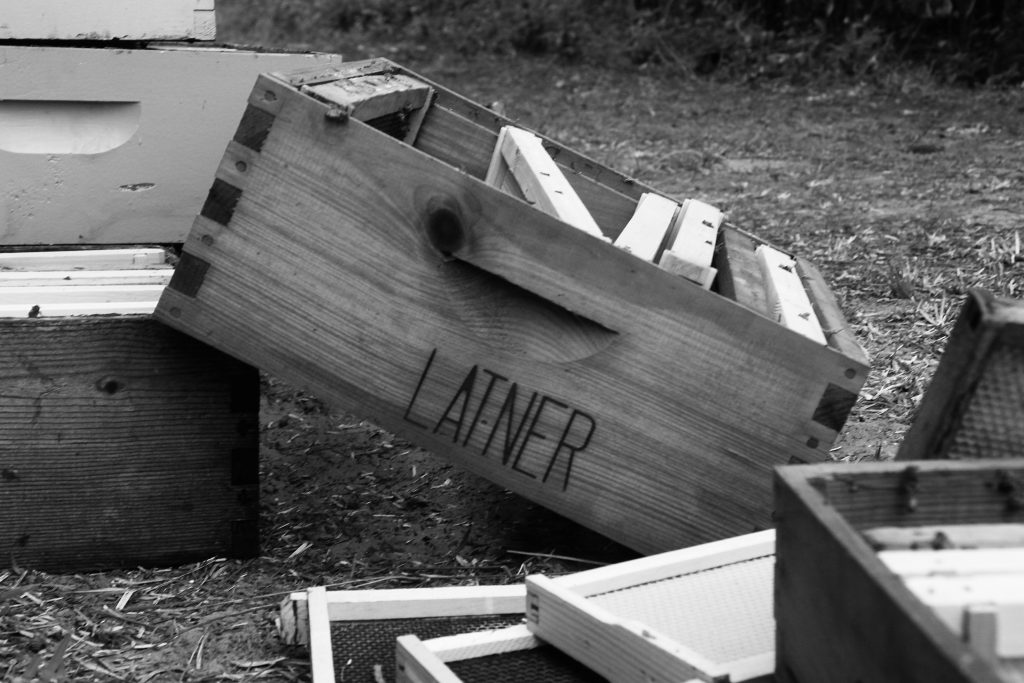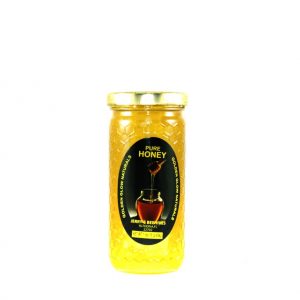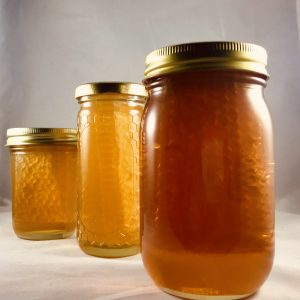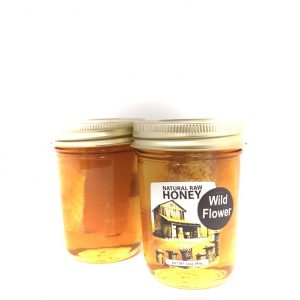“Doin’ a Labor of Love” 2020 Gallberry Honey Crop
Jerry Latner Sanderson FL Gallberry crop harvest 2020
I can see stars out while I sip my too early cup of coffee. Laura calls out “Are you ready?’ Nope, I think to myself. I can hear the low rumble of a diesel engine, as headlights burn my still sleeping eyes. Laura’s father Jerry has arrived 15 minutes early, which is right on time for Jerry, but one cup of coffee too early for myself. Grabbing my mug and bag of cameras Laura and I pile in amongst the myriad of beekeeping equipment that seems to have spilled over from the bed. With little room left in his pickup truck for even my cup of coffee, Jerry pulls away as the last glimmer of predawn darkness escapes the sky. We are on our way to our 2020 Gallberry Honey crop.
We ride on in silence through Ocala National Forest. Sunlight has begun her warm dance, weaving in and out between the pines, as if playing a game of tag with the early morning fog. It wouldn’t be long now on this late May morn, and the Sun will win her dance, banishing any hope of coolness away. For now, at least, it is a welcome morning treasure, lending definition and beauty to the surrounding pines as we roll steadily North. “There’s supposed to be a big storm headed our way tomorrow,” Jerry spoke for the first time. “Bee’s can tell when there’s a storm brewin” I listen on in silence. After a few sips of his coffee, Jerry says, “Ya ain’t sposed to work bee’s on a day like today. They’re liable to be riled up and unhappy.” Taking a few sips of my own coffee, I think about what he’s said. I learned a long time ago if you are quiet long enough around Jerry Latner, you’re probably going to learn something. After a few thousand pines had passed, I ask, “So what does that mean for us?” Placing his coffee snugly back into the soft cushion of the center console, Jerry replied, “Means they will be angry.” Great, I think to myself, not only are we going to be putting ourselves in the midst of millions and billions of bees, but they are all going to be pissing mad? “Yup,” Jerry says as if I had spoken out loud, “we have to knock the tops off the hives to get to the honey. When there is a storm or bad weather or even things like hurricanes and tornadoes, bees will glue the hive lids down with their wax even a hundred miles away. Sometimes the lids are so light it takes two people with tools to open them.” Ok, to myself, once again, not only billions of pissing mad bees, but we’re actually going to break into their homes? As if she inherited her father’s ability to read minds, Laura chimes in, “Yup, B&E of beehives, but you’ll be ok. We got ya covered.” I did not find her words comforting as insightful as they may have been.
With a truck full of gear we head north
When I turn to look back, I see the gear and equipment in the seat next to her for the first time. Not sure if it was my eagerness to leave the mad bee conversation behind or pure fascination, but I was enthralled. To her right were was seemed to be three or four white painter outfits, for lack of a better term. All white body type suits with helmets on them (they are called veils, I learned later). To her left was a milk crate full of shiny tubes with little black holes on top and what looked to be a miniature bellow attached. My curiosity is getting the best of me. I ask, “What are those little metal things?” there is a moment or two that passes, I start to think to myself, maybe I asked the wrong question? After a few more moments and a couple of thousand pine trees later, Jerry speaks up.”Those,” he says, “Those are a beekeeper’s best friend.” Seeming to think I knew what that meant, Jerry looks across the seat at me with a little smile in his eye. The sophomoric look on my face indicated otherwise. Jerry, as if on cue, “Those are my smokers,” emphasizing the word my. Ok, I think to myself, maybe we have a smoked meat lunch ahead of us. “We use these tools to calm the bees down when we open the hives. The smoke, depending on your mix, calms and sedates the bees into a better state to extract the honey we want to get.” Ahhhh, the wonder slowly dissipating from my face, “Can I see one?” I ask Laura. She hands me the shiny piece of equipment. Rolling it over in my hands, I can see exactly how it works. The smoker’s body is metal and shaped like a round tube with one end flat and sealed, and the other end is shaped like the Tin Mans Head from the Wizard of Oz. There was indeed a wooden framed below attached. A person would remove the top, pack the body of the smoker with their “mix.” Then igniting the “mix” and putting the Tin Man head back on. The sealed container doesn’t let enough air into the smoker to allow the fuels to flame. By pumping the bellow with one hand and pointing the spout towards and around the beehives, a keeper can direct the smoke to the desired area or location.
The Smoker, the best tool during Gallberry Season.
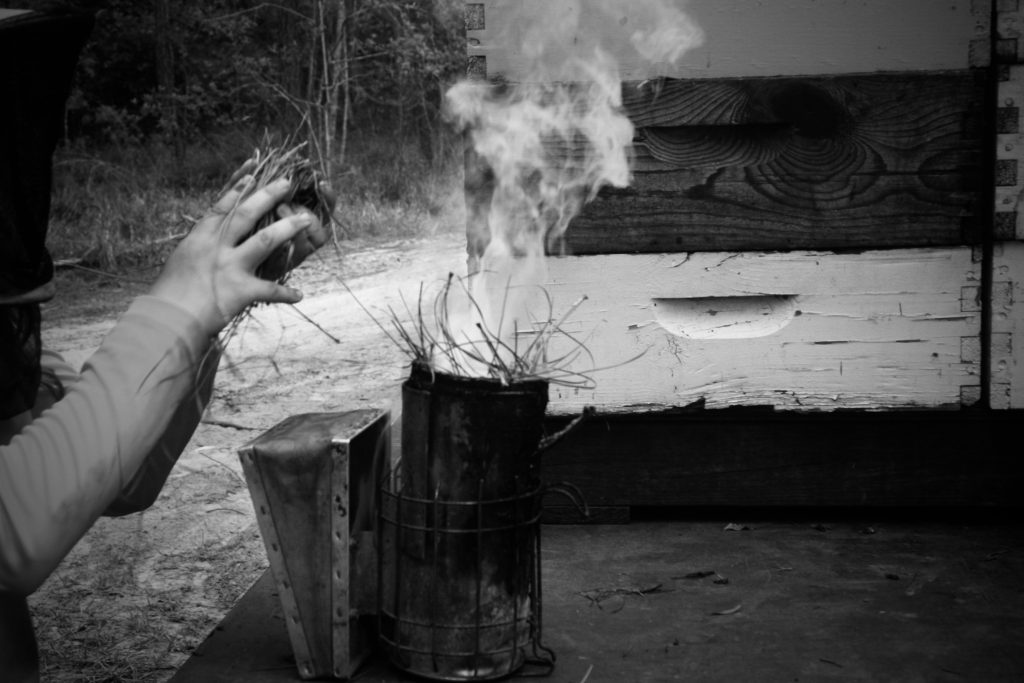
Smoker Packing Like a Pro
The “smoker” I was holding looked older than the others. The body was tarnished in places, and the spout had a semi-thick layer of creosote around its edges. The wood that made up the bellows was worn almost perfectly in the shape of a hand. The leather of the bellows was another story. It appeared to be almost brand new. Pulling open the top of the smoker, I could see what looked like pine needles and bark in the burning chamber. Jerry looking across the bench seat at me, says in a somewhat stern voice, “You need to put the top back on my smoker.” I replace the cap with a whooshing seal sound. Jerry continues, “You don’t look inside another man’s smoker. A fella’s mix is his own creation. It took me 60 years to perfect mine, and it still needs work. Don’t go thinkin I’m gonna go give that away.” Jerry goes on to explain, “Everyone’s smoker mix is a secret. When you first start, you get the basic starter points, but you must make your own that works best for you. Mines a mix of pine needles, oak bark, and a little moss. It’s my ratio. That’s my secret. You’ll see when we get up the road here exactly what I mean.” Once again, left with only the outside of the smoker to remark upon, I ask, “So this is your personal smoker?” Jerry replies, “Yup.” “How old is it?’ There is a long pause again. Jerry finally says, “Maybe 20 or 25 years. I can’t really remember. I’ve had to replace the leather a few times, but the rest of it is pretty old.” In truth, his smoker looked just about as old as the others. “The others,” I ask. “How old are they?” Jerry replies, “Just new this season.” Amazed, I think to myself, will I get one to use. As if clairvoyant, Jerry says, “Don’t worry, you’ll get one of your own to play with.”
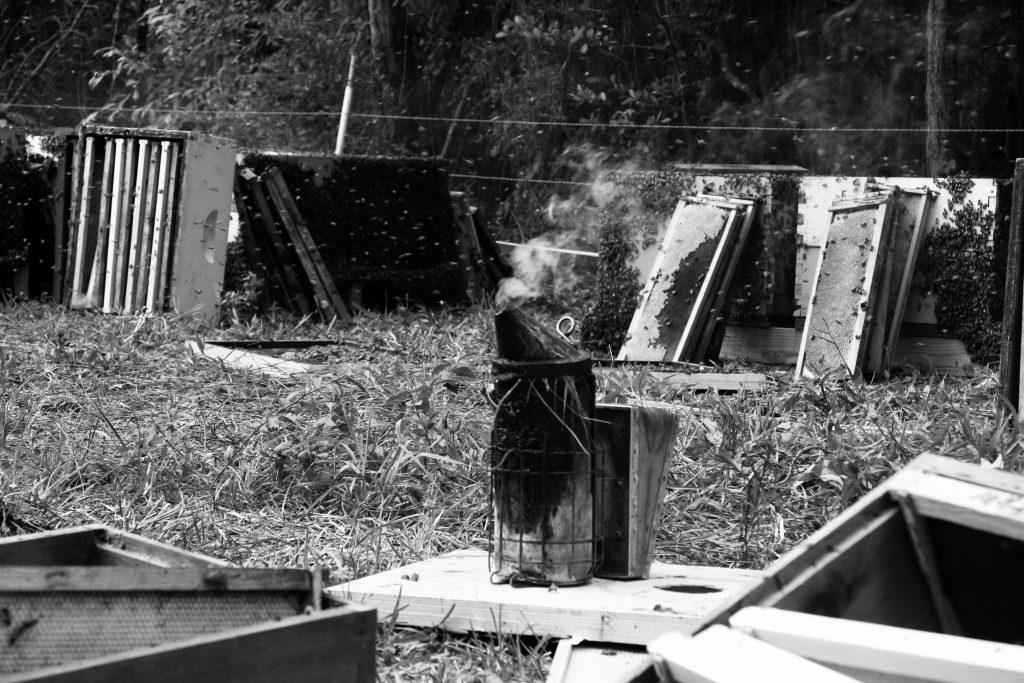
Jerry Latner’s Smoker
Jerry’s Smoker is over 20 years old he has maintained his by replacing the bellow leathers.
We continue our ride North. The Florida sun, now up and full, has chased away any bit of the spectral early morning fog. Above the pines and shining brightly through my window, warming my face and right arm. I am reminded of the forecast of unhappy bees today. With the day warming so soon, I couldn’t agree more. It was definitely gonna storm later. Lost in my own thought for a moment and wondering what lay ahead of me for today, I am startled back to the present by a sudden jolt and bounce of Jerry’s pickup truck. Looking up, I see that we have left the paved road.
We hit the dirt!
I had not seen where we left the pavement and wished I had. Perhaps I will see where when we leave? Hoping so, I become very attentive to our travels, but it does no good. We have taken too many turns for a first-timer ever to remember the path we traveled. Staring at my cell phone for the first time today, I can see it also is completely useless. Of course, no cell service. I don’t even know why I tried. Jerry watching me as I look for my tech to tell me where I am and begins to chuckle softly. “That thing ain’t gonna tell ya nothing out here. Been coming out here for more than 50 years. Phones don’t work here. Sometimes even the GPS loses position. You gotta know where you’re headed.” He was right. My $700 cell phone was just a doorstop out here, no GPS, no signal, good for videos, I suppose but useless for the task at hand. “So you put your bees in the same place every year?” I ask. “Nope, just the same area every year.” Jerry goes on. “Ray told me about where he put the hives. Just about the same place, we used maybe 10 or 11 years ago. I’m pretty sure I know right where they are at.” Ray is Ray Latner, Jerry’s son, and fellow master beekeeper. So our 90-mile journey ends at an unknown destination, not on any map, and not available on any GPS. If you lose your way, there’s no cell service and only about 1200 miles of dirt roads to cover to find your way back out. Some real top secret stuff. Well, your secrets safe with me. I have no idea where we are. Jerry slows the truck as we come out of the woods and into a small clearing. Rolling all the windows up from his driver’s seat, we come to a stop. Looking around, Jerry says, “We are here.” Where? Here? How does he know that? We had not seen any beehives, any other people, vehicles, or even tire tracks. As we exit the truck, I can hear, almost below audible sound for my ear, a low droning buzz. Jerry comes around to my side of the truck. “You here that?” referring to the buzz. “Yes, I can. Is it the bees?” I ask, knowing full well his reply. “Yup, and we are late,” came his reply. Handing me a veil, he says, “Put this on.” not having any idea how to do so, I look at the covering in my hands. It is a large hat with a screen that goes 360 degrees around. There is a drawstring at the bottom of the screen. Placing the “hat” on my head and draping the screen around my face, I draw the strings somewhat tight around my neck. Feeling a little like an astronaut mixed with a CDC employee, I watch as Laura and Jerry do the same. Jerry asks, ” You want a bee suit too?” I wasn’t sure, did I? “Do I?” I ask. “Are you guys gonna wear one?” wondering if I was going to be alone. Jerry shook his head, ” Haven’t worn one of those in 50 years. Well, at least not unless I was removing some bad bees.” Laura also shook her head, no. “Well, I guess it’s a no for me too then.” Thinking out loud, I ask, “Bad bees? Like Cops… Bad Bees Bad Bees What ya gonna……..” It wasn’t translating for Jerry as he nodded and said, “Ya, sometimes you get a hive or find one that the bees are mad all the time. It ain’t like you can out them in time out. It’s something you learn to anticipate and respond to the more time you spend with your bees. The more time you’re around them, the more you get to know them and them you. This here, everything you’re about to see, is truly doin’ a labor of love. “Grabbing his smoker and turning to lead the way, I follow Jerry and Laura around the bend in the road. They carrying smokers, myself carrying my camera and recording devices, we round the bend to see a scene unfold like nothing else I’ve ever seen before. This was a full-on Gallberry Honey harvest!
We arrive at Sanderson Gallberry Honey Harvest
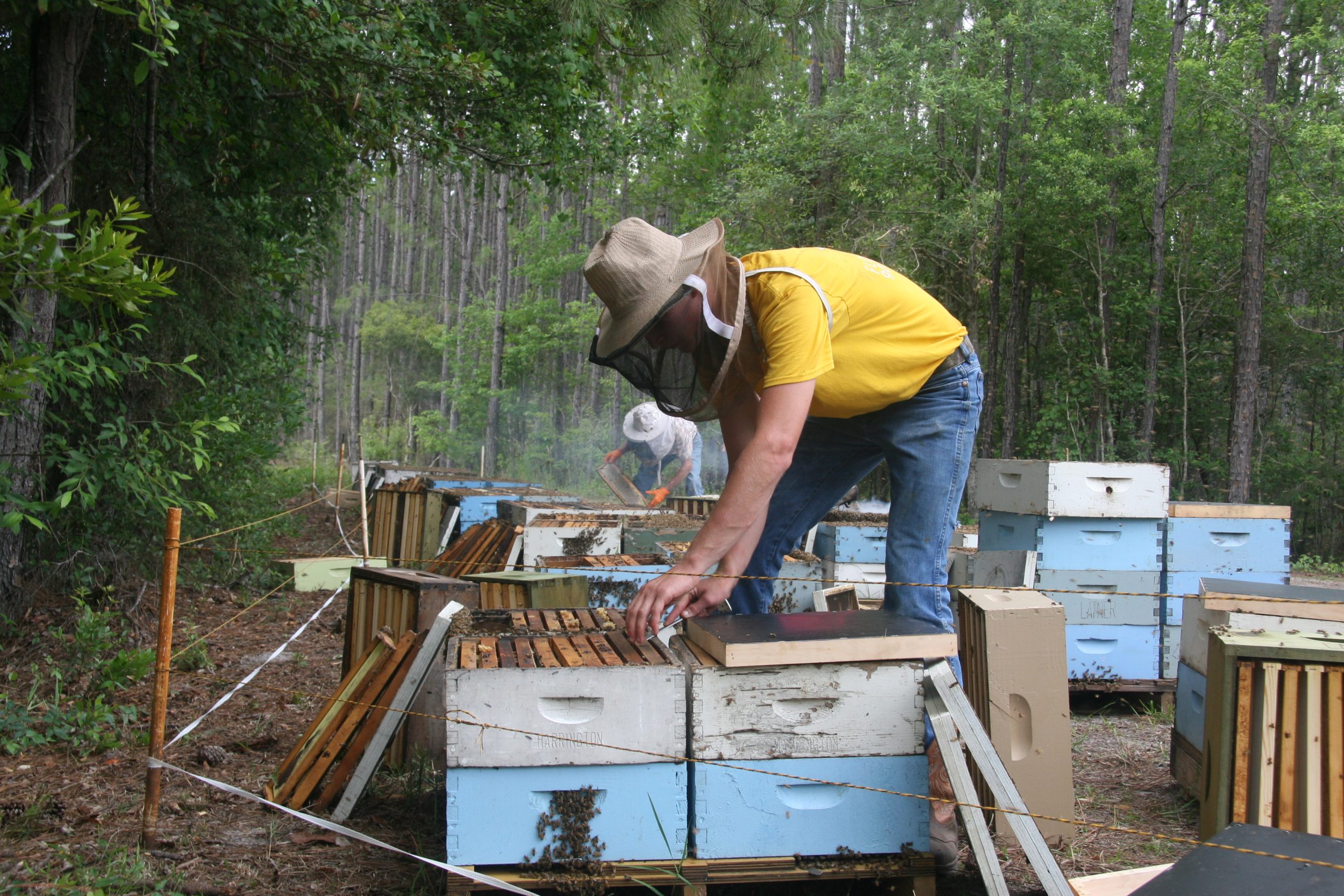
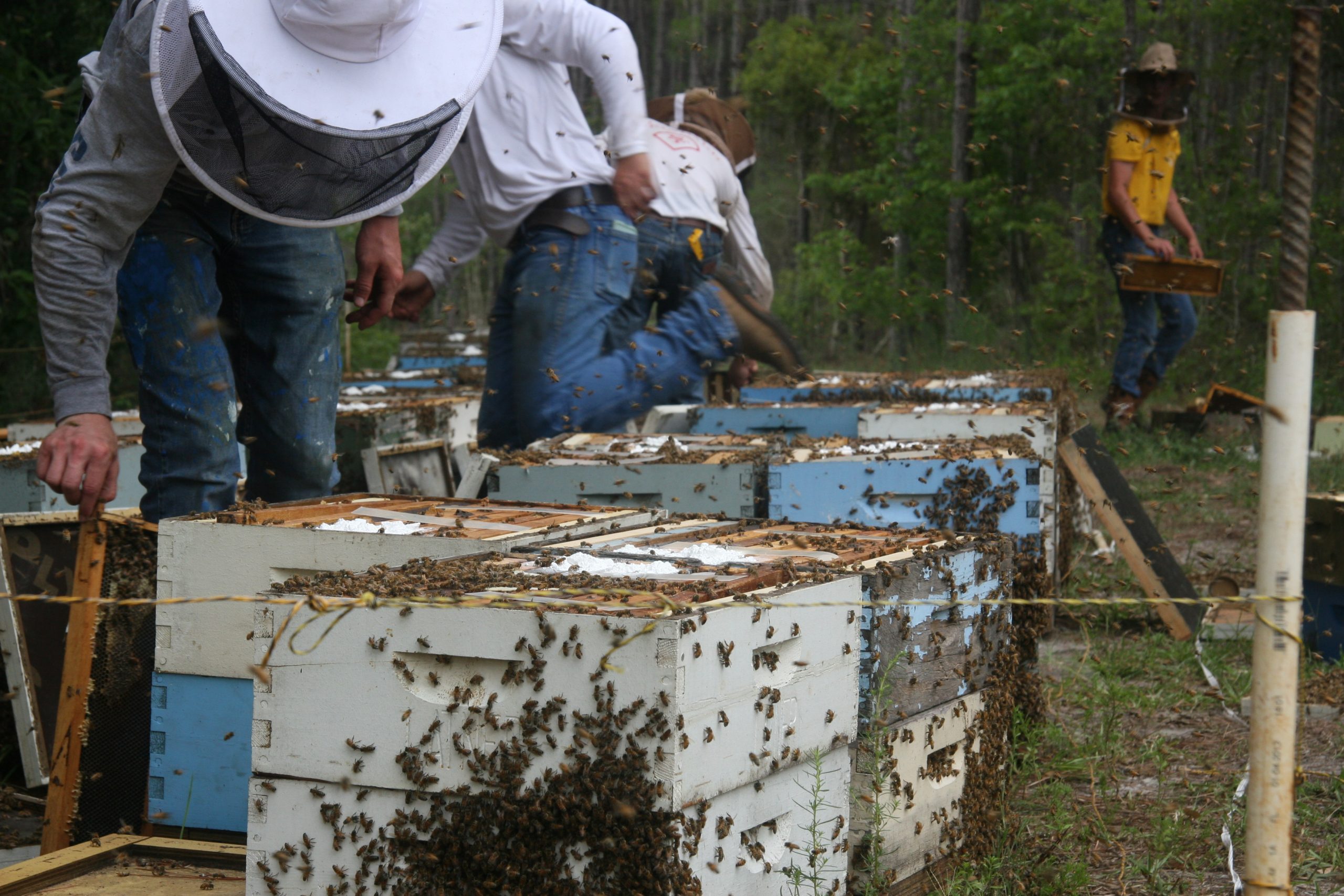




The humming sound heard before was now a dull roar. I am greeted by the sight of not thousands, nor hundreds of thousands, not even millions, but rather billions of bees. Hundreds of beehives packed full of Gallberry honey are stacked neatly into rows. Amidst the hives are several people all wearing veils, and they are taking the beehives apart! Jerry immediately says, “Yup, I knew it, bad weather coming! This is not the way to do bees!” Excited at the sight of the hives riled, Jerry ignited his smoker immediately and began fanning the open tops of the disassembled bee boxes. The roar of the bees makes normal speech almost inaudible. They are everywhere zinging and stinging as they go mad, dive-bombing the heads of everyone within 100 feet. It’s then that I notice the people working the bees are being stung. Even with long clothing, the bees are stinging hands and arms. No one seems to minds. Now and then, you will see someone stand up straight, run their hands together to find and remove a stinger, and immediately return to work. I gain confidence. Tired of using my tele lens, I change to the 300mm for some closeup shots and hopefully gain some inside information about the process I was witnessing. I slowly creep closer and closer to the beehive work. Yes, the bees see me. Yes, they are even trying to bombard my head and camera, but no stings yet. Once among the hives and workers, I lose almost all fear. My questions are answered freely enough, yet I do not try to ask too many questions. I do ask Jerry’s son Ray Latner how long he’s been doin this? His reply, “I was raised to be a Beekeeper since before I was born.”
This simple statement illustrates just how thick the honey does run in the Latner family.
“Whatever you do, don’t start runnin”
Jerry latner sage advice from a beekeeper Sanderson fl
Mastering fear in the Gallberry honey field
With the crew hard at work and myself trying to stay out of the way, I can hear Jerry say, “This is not how you’re supposed to do, bees.” Looking upward at the sky, he mutters, “gonna rain, not good. Too late now can’t stop. We’re just going to have to work through it.” He pumps his smoker bellows, but not in any specific direction, but more like a racer lining up on the starting blocks. Then without hesitation, he dives headlong into the throng of bees, hives, and people. Pumping his sedative mix into hives and onto crew members. He circles and pumps, never really stopping, just hovering, ironically like a bee. I follow him in clicking and whirring my camera as fast and as steady as I can. Entering the center of the Gallberry honey crop. I can’t believe I’m not getting stung, I think to myself. I pull the camera to my face again to try to catch more of the calamity. That’s when kapow I feel my lips start to burn. My brain kicks in fight or flight. This is bad can’t fight the bee, can’t remove my veil to get the bee or bees off my face. With my mind now deciding it was time to get away, it is truly all I can do to stand up very slowly and moving to step normally away from all of the commotion. As I am weaving my way back out of the melee, I am reminded of Jerry’s words’ “You’re probably going to get stung. Well, let’s say you’re going to get stung. When this happens, do not slap, do not remove your equipment, and above all, no matter what, Whatever you do, don’t start runnin. You see, bees exude a pheromone when they sting a threat. That little guy tells every bee for 20 feet around to go to the exact spot and sting again and again until the intruder either retreats or dies.” With this in mind, I walk some 150 feet away, slowly but with intention. I get into the “safe zone” and remove my veil. It’s then I see exactly what had happened. The three bees I saw never even made it into the hood. I had pressed them against my face when I was attempting to shoot. Realizing what had just occurred, I felt kind of bad. My face actually did not hurt at all, and there was no sign of swelling or even irritation. Hmhp, ok that wasn’t so bad. No worries, I think and turn on the heel to once again watch the harvesting taking place.
Separating the brood from the comb. Our 2020 Gallberry and Comb Honey Crop.
When I return, I see a brief chance to catch a little video of what was happening deep in the woods in Sanderson. I ask the crew, ” So what are you doing now?” the unanimous reply, “We are separating the Brood from the Comb,” came from the group above the drone of the bees. I know they are swamped, so I ask Jerry to show me exactly what is going on. He proceeds into the hives. He digs into the first hive he comes to. Removing a frame, he raises it so I can see. “Here is the brood. It’s dark and looks like this. We put that back. Then you pull the honey.” He says, holding up a frame of golden Gallberry honeycomb. So the whole process boiled down to this separation, selecting the edible honey and leaving just enough for the bees to survive while replacing the “brood” or baby larvae bees. Treating the hives and ensuring hive survival is all part of the labor-intensive process. Working quickly and with steady hands and a resolution to complete their harvest, the Latners work on it throughout the day’s balance. Moving hives, unboxing them, separating the Gallberry honey and brood’s frames, then replacing the hives on a large flatbed truck for their journey to their next destination.
Headed Home Bee’s and Keeper Covered in Gallberry Honey and worn out!
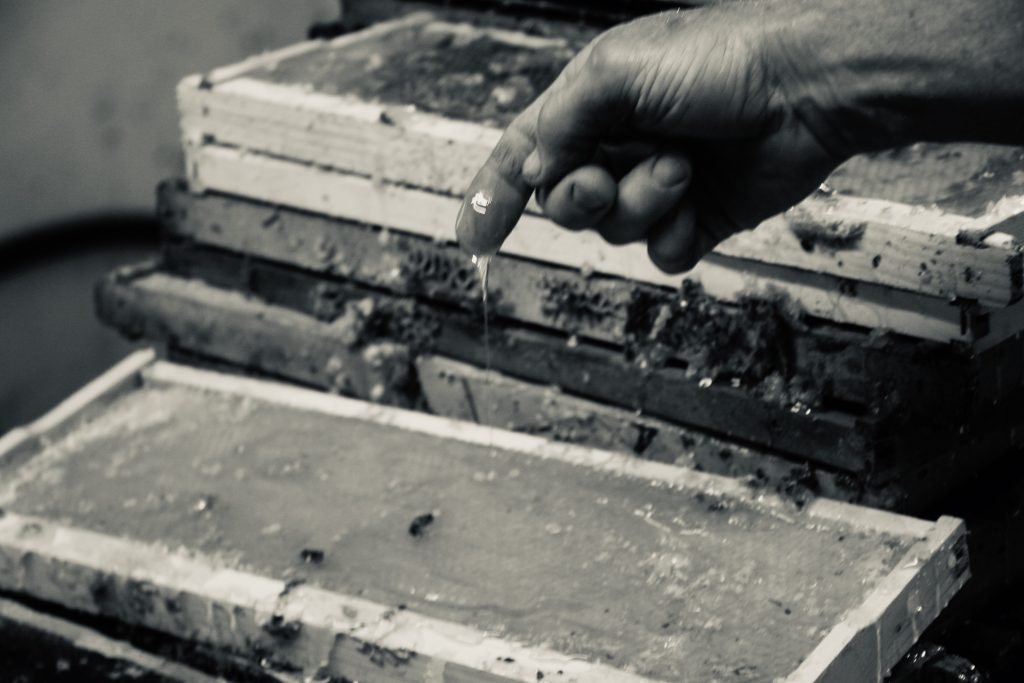
“Our best Gallberry honey crop in a very long time” Jerry explains during the extraction of our 2020 Comb and Gallberry harvest.
Exhausted and both physically and mentally, by the end of the day, I am ready when Jerry says, “Well, I guess we oughta head for the house, get some supper, I got honey I need to run tonight.” I look across the truck seat in silence. How can he be saying this? For a man, some 35 years my senior was ready to have supper and then work again through the nite until after midnight running honey to be bottled. I myself was ready for a long shower and a bed. “This here,” Jerry said. “This here today isn’t even the half of it. We will get all the frames home, and then we need to set up for extraction. While we are doing that, we will select the best frames for our Honeycomb. We will hand cut the comb sections and bottle them. Then we still will need to bottle the rest of this crop. Them guys” referring to the crew “They have three other areas to harvest yet. They will work throughout the nite and into tomorrow to get all the honey out.” I ride along in silence. We travel south through the Ocala forest. This time the evening sun is setting among the pines, casting shadows too long to see the ends. Red and golden rays flicker past as we near home.
As we pull up, we arrive home, and Jerry asks if I want to see the extraction room and see how it works. “Ya feel like we can run on up to the extraction house, and I show ya how it works” yes, I wanted to go, but no, I wasn’t going to take him up on the offer today. Wearily I shake my head. “Not today Jerry, I will come up and check it out this week.” Nodding his head, Jerry turns on his heel and starts to head to the bottling house. He was really going to bottle more Gallberry honey!
As for me, the story continues….. Look forward to the second half of our 2020 Gallberry honey Crop “Extraction” in the late part of November.
For you the reader. We do offer our 2020 Gallberry Honey Crop for sale. We offer Florida Gallberry honey in both honeycomb and bottled honey. You may find all of our honeys at our website, and for sale in Mount Dora, Florida, and Altoona, Florida.
We welcome your review of any of the products. Please help us help everyone else by taking less than 5 minutes to leave your review. It’s as easy as just signing up to leave your review. Sign Up Here!!!!. Thank you all!
Visit our Little Store in Altoona Fl. On the left at the light downtown… Tuesday through Saturday 10am -6pm
- Monday
- Closed
- Tuesday
- 10:00 am – 6:00 pm
- Wednesday
- 10:00 am – 6:00 pm
- Thursday
- 10:00 am – 6:00 pm
- Friday
- 10:00 am – 6:00 pm
- Saturday
- 10:00 am – 6:00 pm
- Sunday
- Closed
- Monday
- Closed
- Tuesday
- Closed
- Wednesday
- Closed
- Thursday
- Closed
- Friday
- Closed
- Saturday
- 8:00 am – 4:00 pm
- Sunday
- 8:00 am – 4:00 pm
-
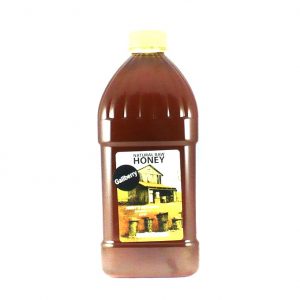 Gallberry Blossom 5lb ilx$45.99
Gallberry Blossom 5lb ilx$45.99 -
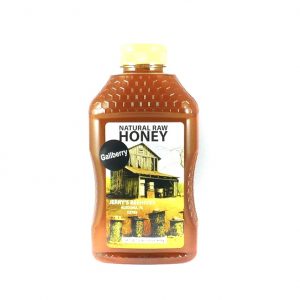 Gallberry Blossom 2lb ilx$23.99
Gallberry Blossom 2lb ilx$23.99 -
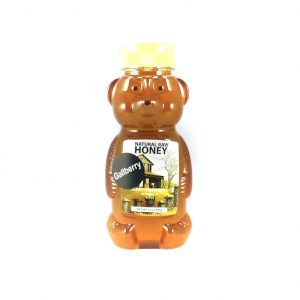 Gallberry Blossom 12 oz$13.99
Gallberry Blossom 12 oz$13.99
We are also holding our Go Nuts Almond Blossom Sale as well. Shop and save on these items until January
-
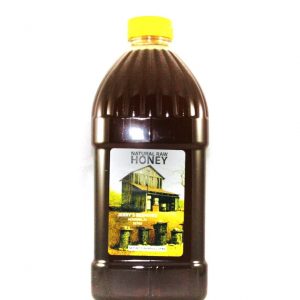 Almond Blossom Honey 5 Lb$41.99
Almond Blossom Honey 5 Lb$41.99 -
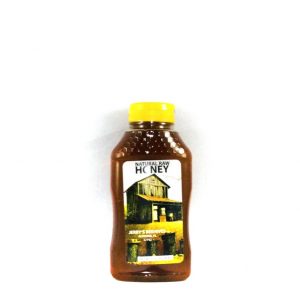 Almond Blossom Honey 1 Lb$15.99
Almond Blossom Honey 1 Lb$15.99 -
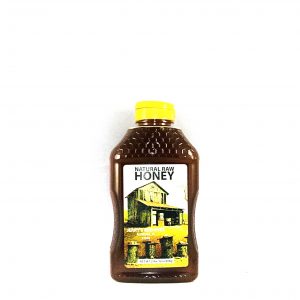 Almond Blossom Honey 2 Lb$23.99
Almond Blossom Honey 2 Lb$23.99



